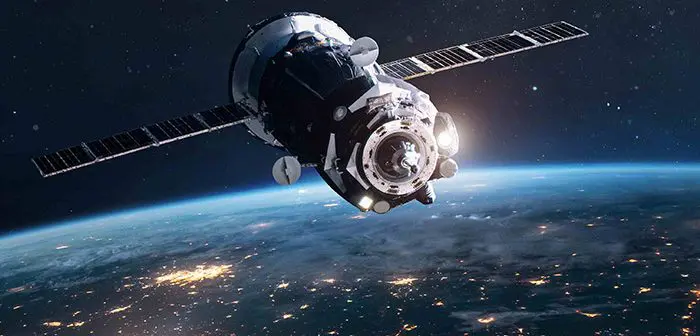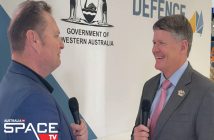
In an era where space is no longer a peaceful sanctuary but a contested and increasingly militarised domain, the partnership between the United States and Australia has never been more vital.
Speaking on the sidelines of a Space Summit in Sydney last week, Brigadier General Anthony ‘Chachi’ Mastalir, Commander of US Space Forces Indo-Pacific, shared critical insights on the evolving nature of space threats, the strategic imperatives driving bilateral collaboration, and the future trajectory of space operations in the Indo-Pacific region.
The Emerging Threat Landscape: China, Russia, and North Korea
Mastalir emphasised the stark reality of space as a contested warfighting domain, where adversaries like China and Russia are actively developing and deploying capabilities aimed at challenging US and allied space assets.
“The People’s Liberation Army (PLA) exercises are no longer mere drills but rehearsals,” he noted, referencing Admiral Samuel Paparo, head of US Indo-Pacific Command’s description. Where a decade ago China conducted exercises involving a single combined arms battalion, now these drills encompass over 40 battalions, often with correlated space activities designed to test and demonstrate counterspace capabilities.
One significant concern is China’s development of ground-based direct-ascent anti-satellite (ASAT) weapons, which pose a direct threat to the satellites underpinning critical communications, missile warning, intelligence, surveillance, and reconnaissance (ISR) networks. Russia, similarly, is accelerating its counterspace program amid its ongoing conflict in Ukraine. North Korea’s ballistic missile program, in violation of UN Security Council resolutions, further complicates the regional threat matrix, with potential technology and intelligence exchanges among these three nations, as well as Iran, raising alarms.
The complex web of threats has led US and Australian forces to prioritise space domain awareness and defence, recognising the essential role space assets play in modern joint warfighting.
The US-Australia alliance, with decades of trust and shared sacrifice, now extends firmly into space. Mastalir described space as “a warfighting domain that is critical to joint warfighting,” stressing that protecting the resilience of space-enabled networks is essential to safeguarding forces on land, sea, air, and cyber domains.
To meet these challenges, the US Space Forces Indo-Pacific and the Australian Defence Force (ADF) are deeply engaged in developing integrated space architectures, sharing data at unprecedented speeds, and conducting joint exercises that enhance interoperability across all domains. This cooperation is more than capability. The two nations collaborate closely on satellite missions, operator training, and the continuous integration of space professionals, often working side by side.
Mastalir highlighted ongoing projects such as the Deep Space Advanced Radar Capability (known as Dark) and the Satellite Communications Augmentation Resource (SCAR). The Dark radar, stationed in the southern hemisphere, provides critical access to geosynchronous orbit, enhancing the ability to detect and track threats in a vital orbital region.
SCAR complements the satellite control network, allowing the US and allies to command and control satellites globally. The Australian ground station’s role in this network significantly enhances command and control capabilities for both US and allied satellites.
The operational importance of these capabilities was underscored in exercises such as Pacific Sentry, a tier-one command post exercise traditionally bilateral between the US and Australia but increasingly including Japan as a trilateral partner. These exercises simulate command relationships, order generation, and integration of space assets across participating nations, ensuring interoperability and coordinated responses to threats.
Talisman Saber, a major Australia-US exercise, recently included space operations units, bringing officials face-to-face with active space defence initiatives. These engagements have positively influenced the deepening of joint partnerships and approval of cooperative programs like Dark.
Expanding Partnerships Beyond Australia
While Australia remains the primary partner in the Indo-Pacific space domain, the US Space Forces Indo-Pacific is also looking to deepen ties with other regional allies, including Japan, South Korea, New Zealand, and India. Though the Quadrilateral Security Dialogue (Quad) is a diplomatic rather than military mechanism, collaboration with India is seen as strategically important given its growing space capabilities.
Japan, in particular, is making significant investments in its space forces, progressing from a Space Operations Group to potentially a two or three-star command in the near future. The US recently stood up Space Forces Japan to support this growth and foster interoperability. Similarly, Space Forces Korea has been established to support US Forces Korea, reflecting the integrated nature of space defence across the region.
Personnel exchanges are a critical aspect of this cooperation. Brig. Gen. Mastalir noted that Australian officers are embedded in US Space Forces Indo-Pacific, and vice versa, enabling close communication and shared expertise that strengthen both nations’ space capabilities.
Challenges and the Path Forward
Space domain awareness remains the number one priority for US and Australian forces. Space is vast, with different operational “neighbourhoods” such as low Earth orbit, medium Earth orbit, and geosynchronous orbit, each with unique characteristics and threats. Tracking thousands of both man-made and natural objects across these orbits is a monumental task.
Mastalir stressed the importance of knowing immediately when a potential adversary spacecraft manoeuvres into a weapon engagement zone, an area where it could threaten US or allied satellites. Linking space situational awareness with air, land, and maritime domains provides critical early warning and integrated defence posture.
However, the increasing weaponisation of space by China and Russia, including anti-satellite missile tests that generate hazardous debris fields, presents significant risks not only militarily but also for commercial and civil space stakeholders. Both countries’ tests have forced constant manoeuvres by commercial satellites to avoid debris, highlighting the broader consequences of counterspace actions.
The US and Australia emphasise the need to maintain norms of responsible behaviour and space accessibility, balancing deterrence with the long-term sustainability of the space environment. Diplomatic efforts have yet to curb aggressive actions, leading to the recognition that deterrence through demonstrated defensive and offensive capabilities is essential.
Proliferation of smaller, more numerous satellites is seen as a way to complicate adversary targeting and enhance resilience. Additionally, the development of “space fires” capabilities, such as radio frequency jamming, directed energy weapons, and kinetic countermeasures, aims to provide the ability to defend and, if necessary, respond in space.
An Alliance for the Challenges of Space
The US and Australia are clearly investing deeply in their space partnership to meet the complex challenges of this new warfighting domain. From satellite communications and radar capabilities to joint exercises and personnel exchanges, the alliance is building an integrated, resilient, and interoperable space defence architecture.
Brigadier General Mastalir’s candid assessment underscores the urgency of these efforts against a backdrop of aggressive adversaries who seek to exploit vulnerabilities in space. Yet, the shared vision of a free and open Indo-Pacific, combined with decades of trust and collaboration, provides a strong foundation.
As space becomes central to national security and military operations, the US-Australia partnership will continue to be a vital pillar for peace, stability, and security in the region.
AI assisted article.





